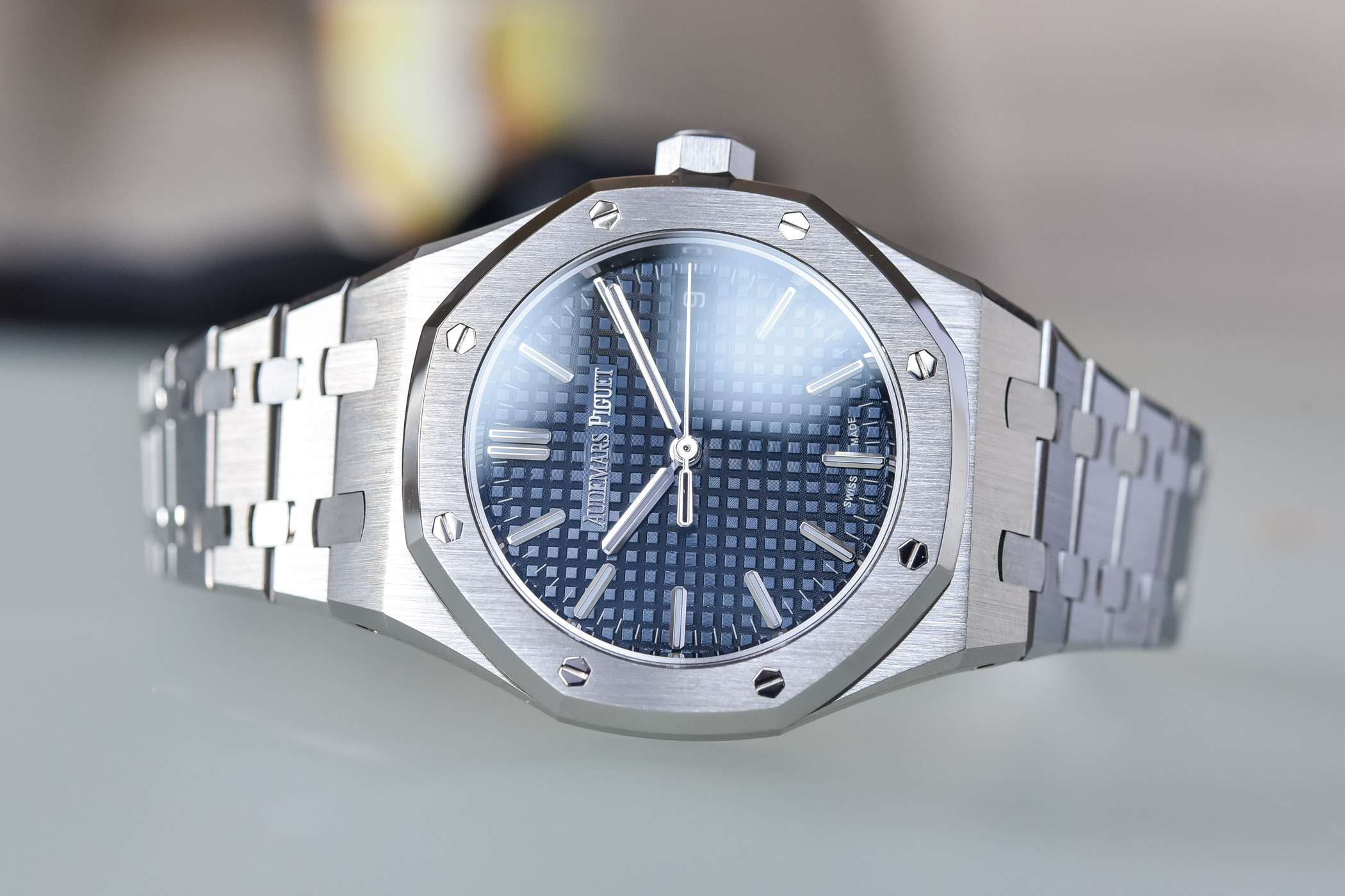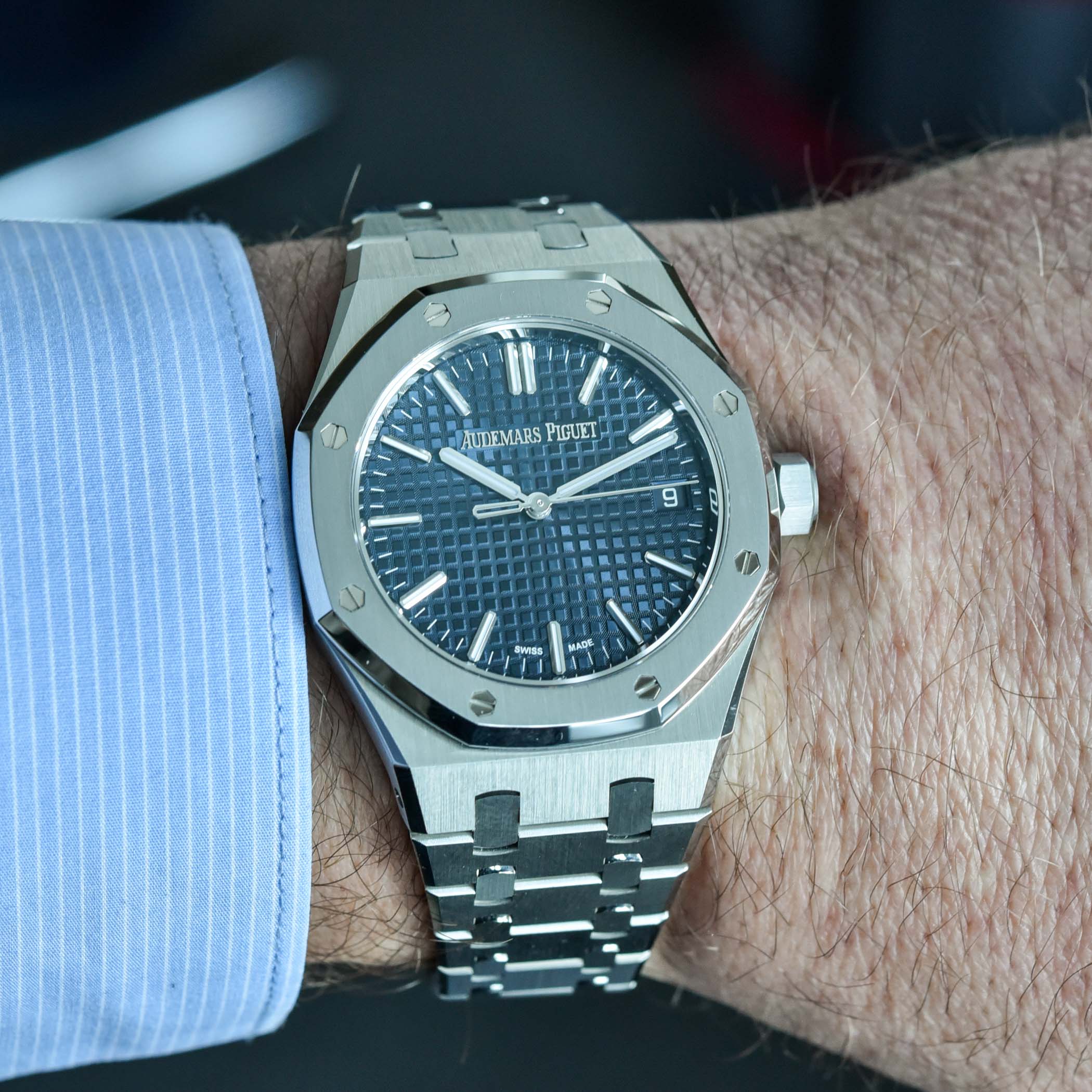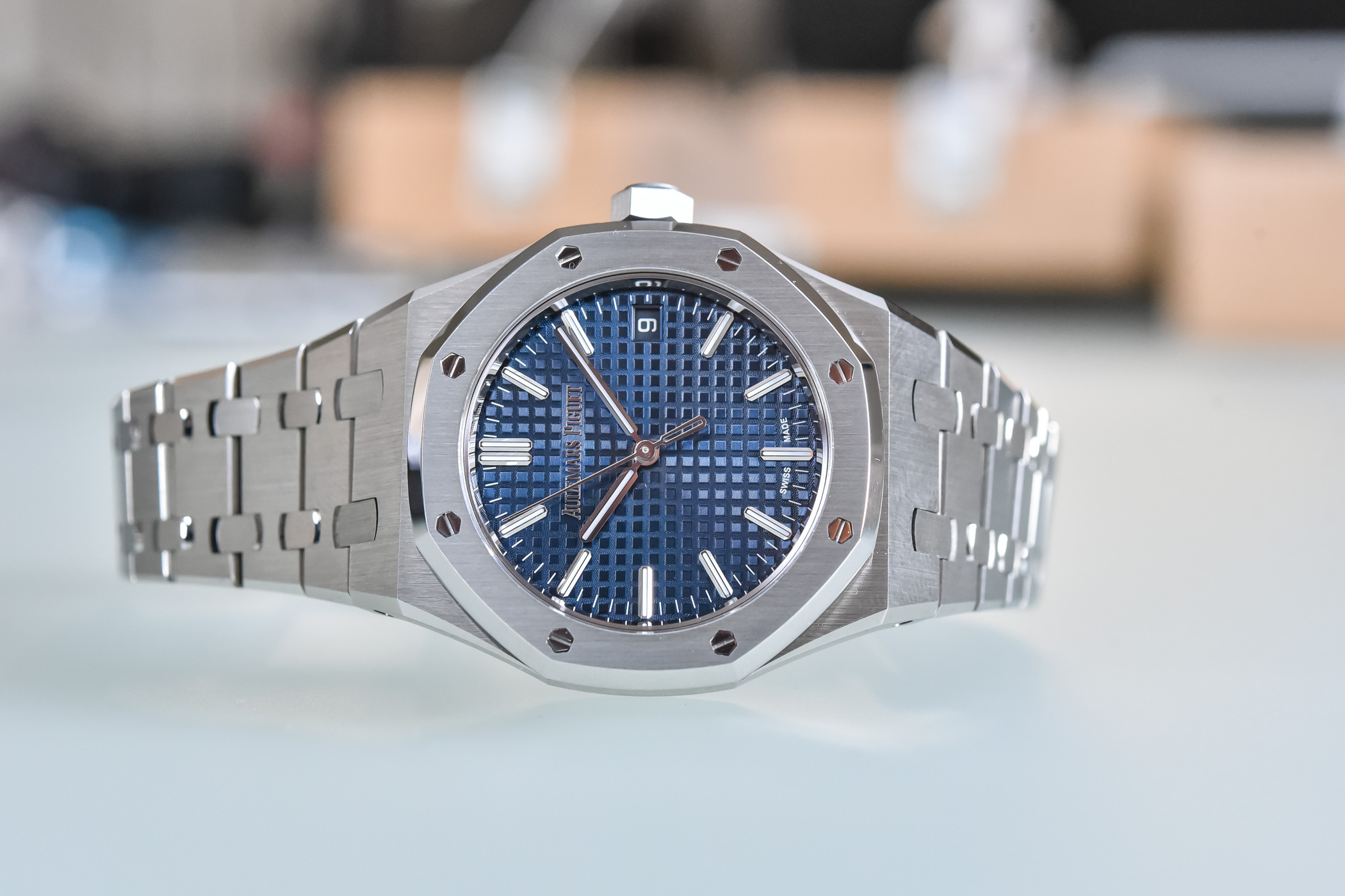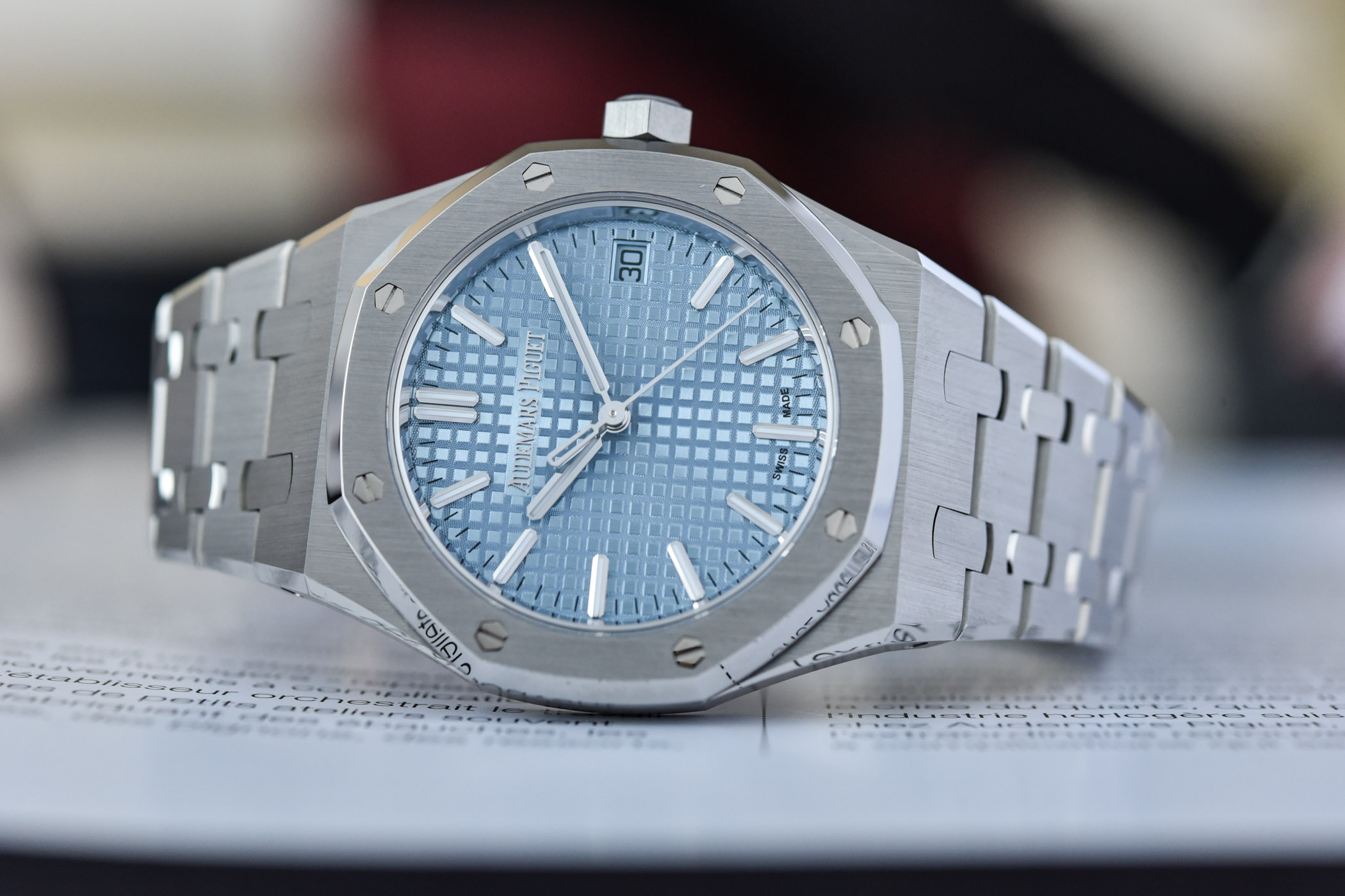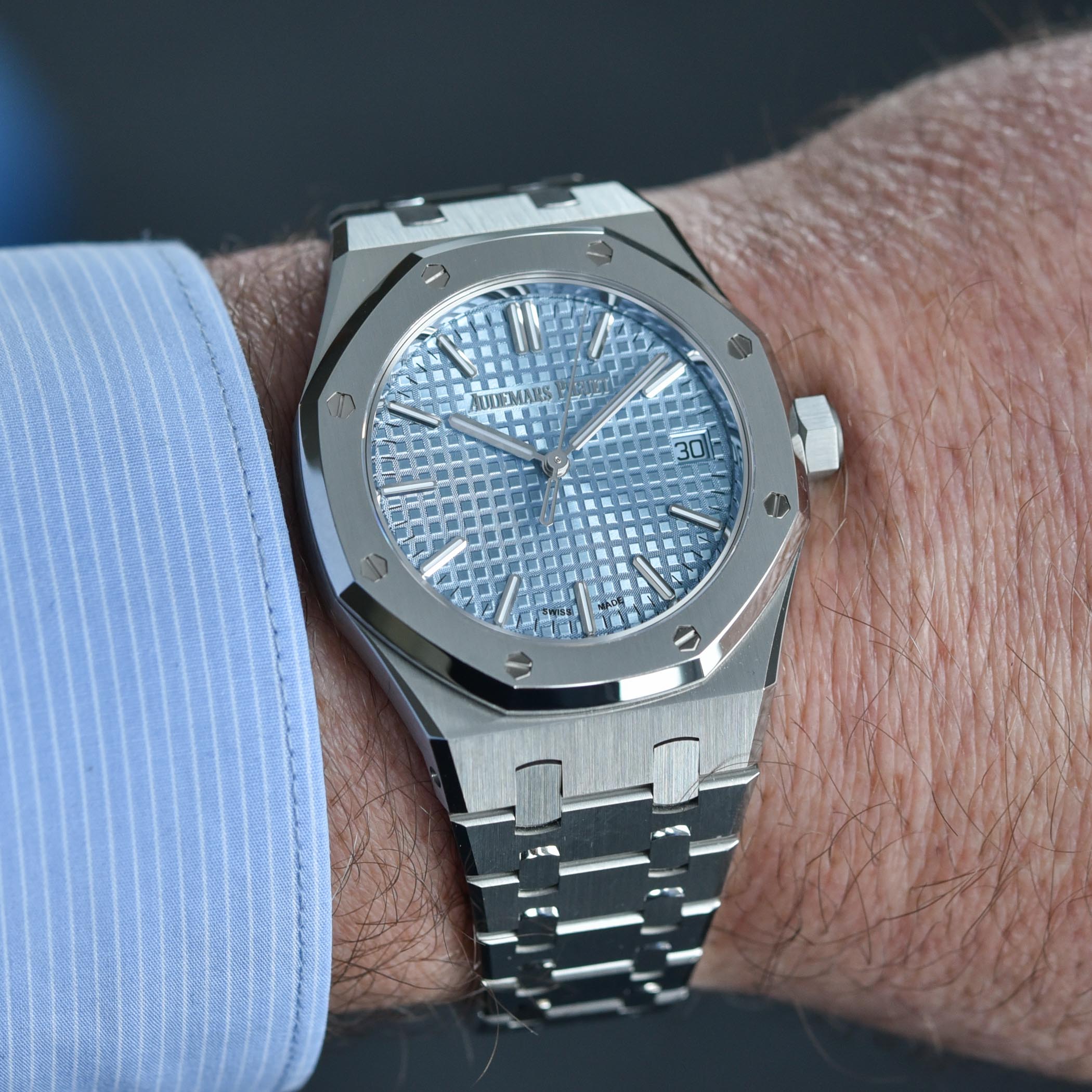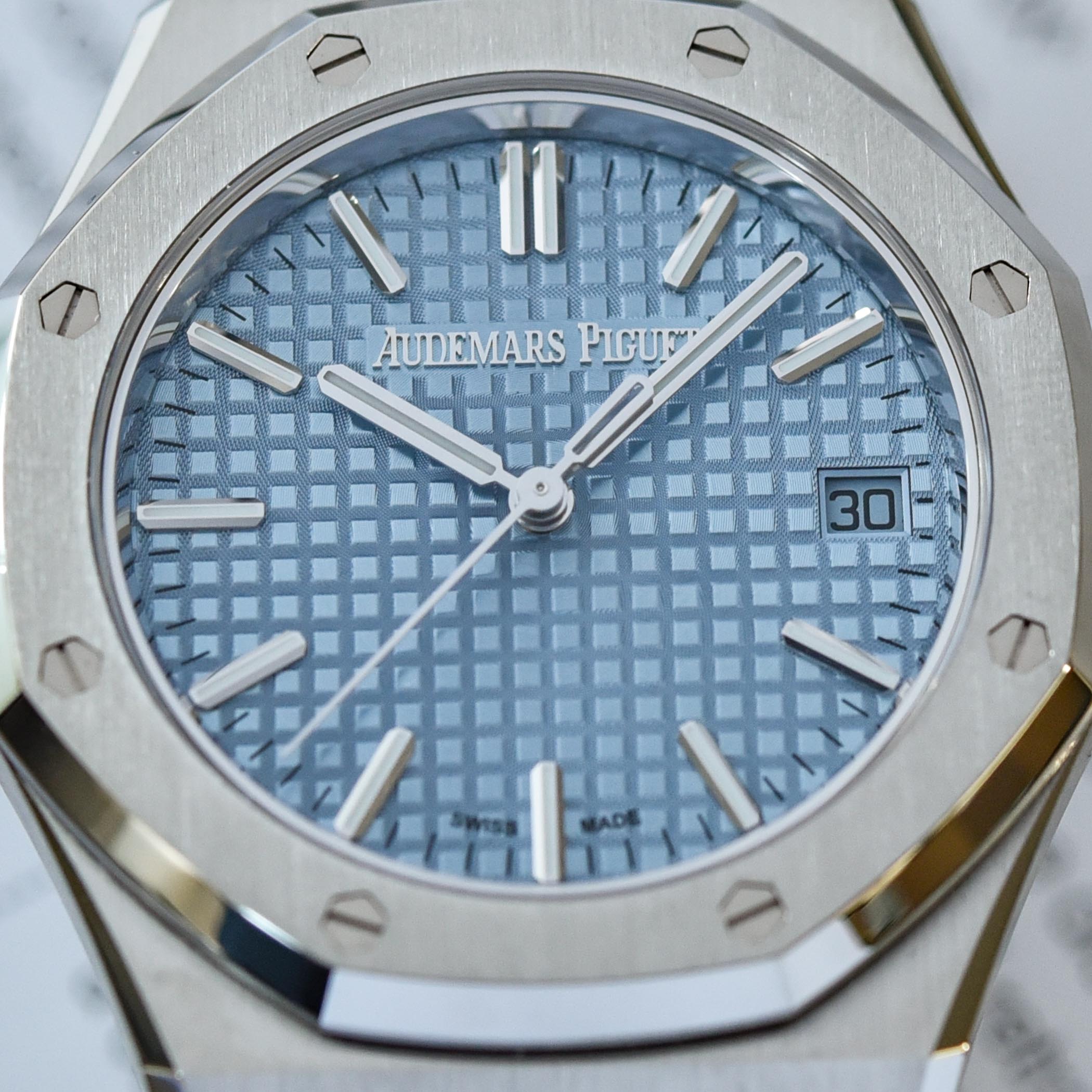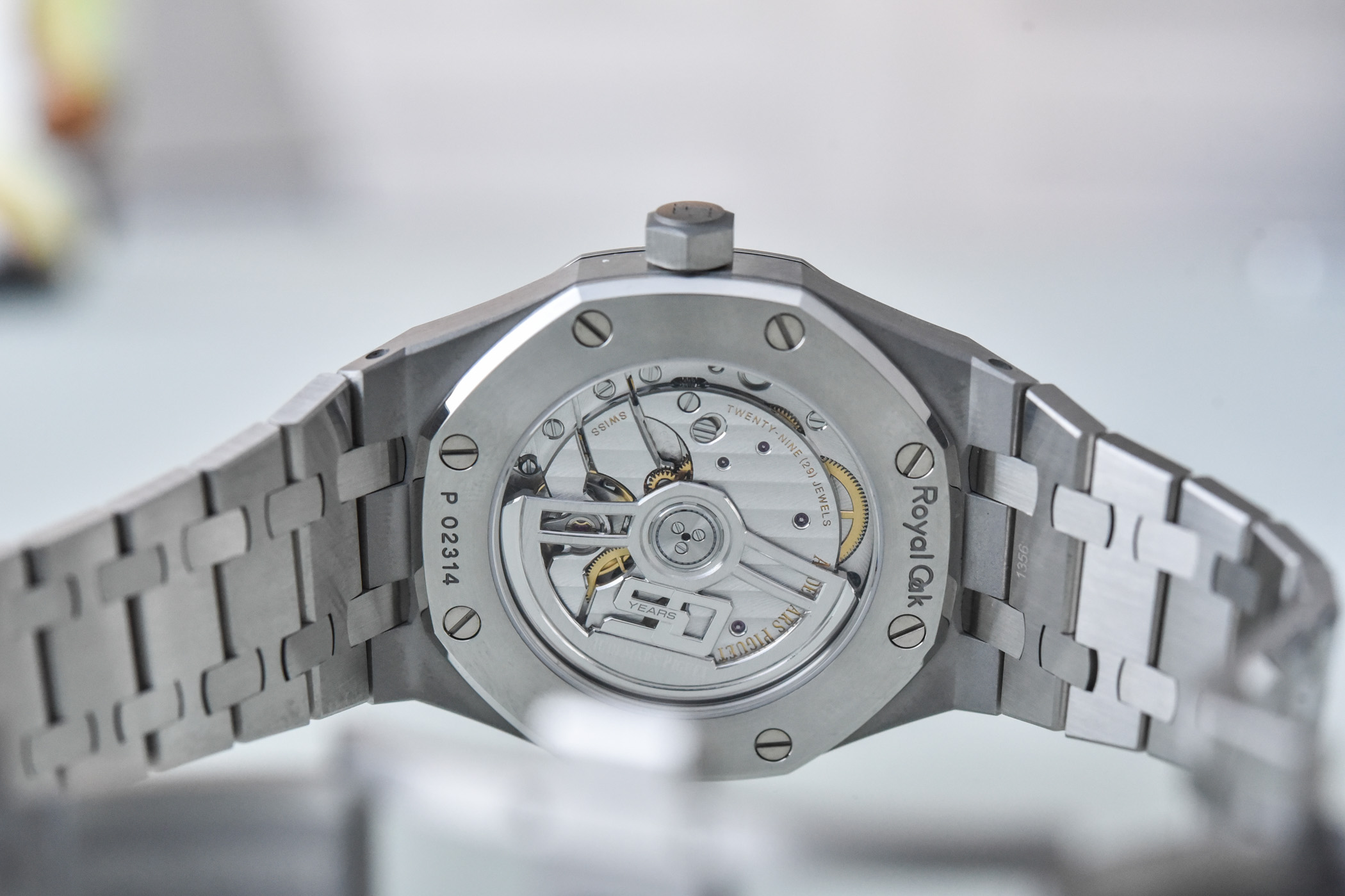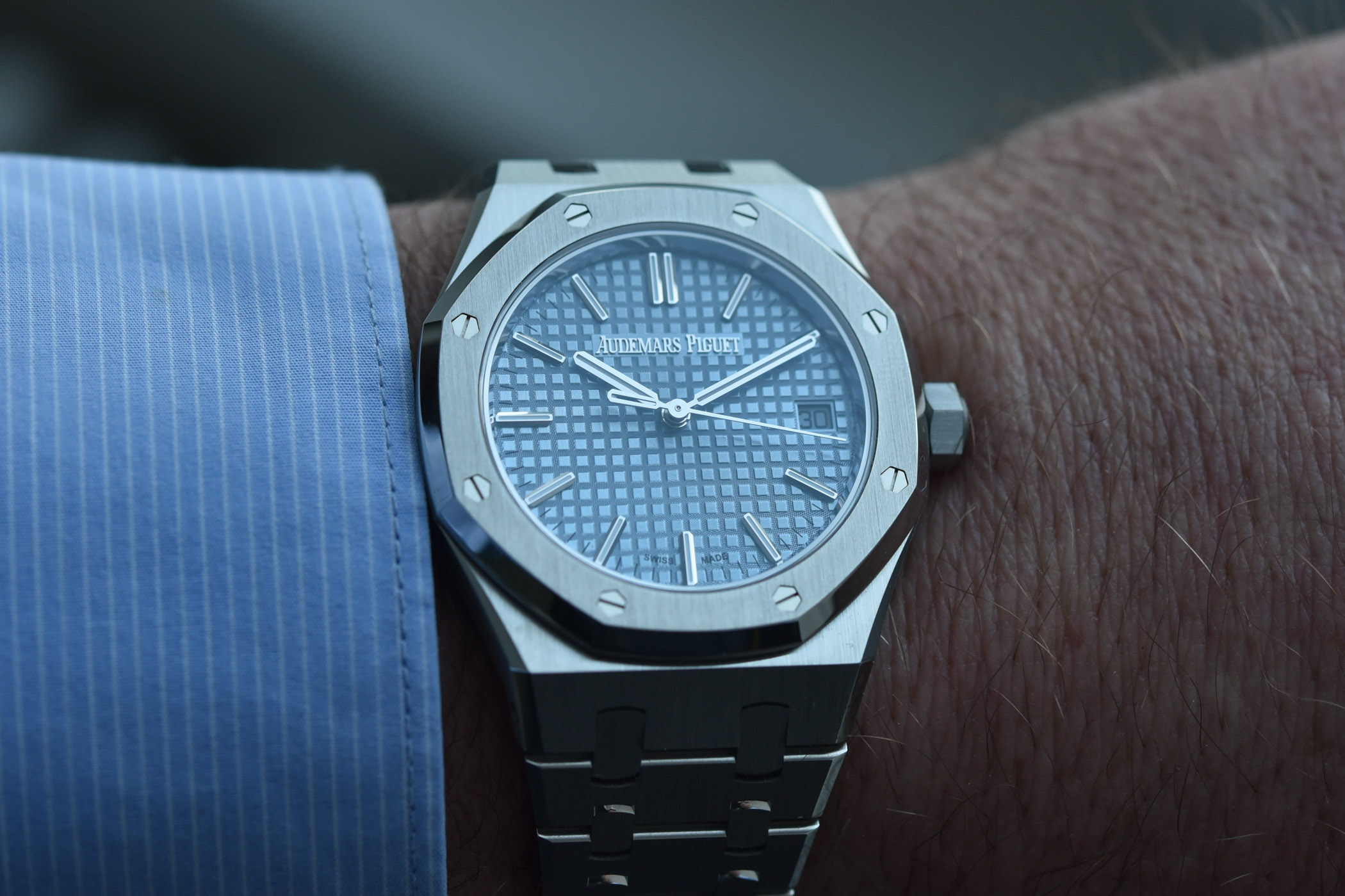The New Audemars Piguet Royal Oak Selfwinding 37mm in Steel with Blue Dials
Fifty years down the line and looking refreshed with a slimmer silhouette and a cleaner dial.
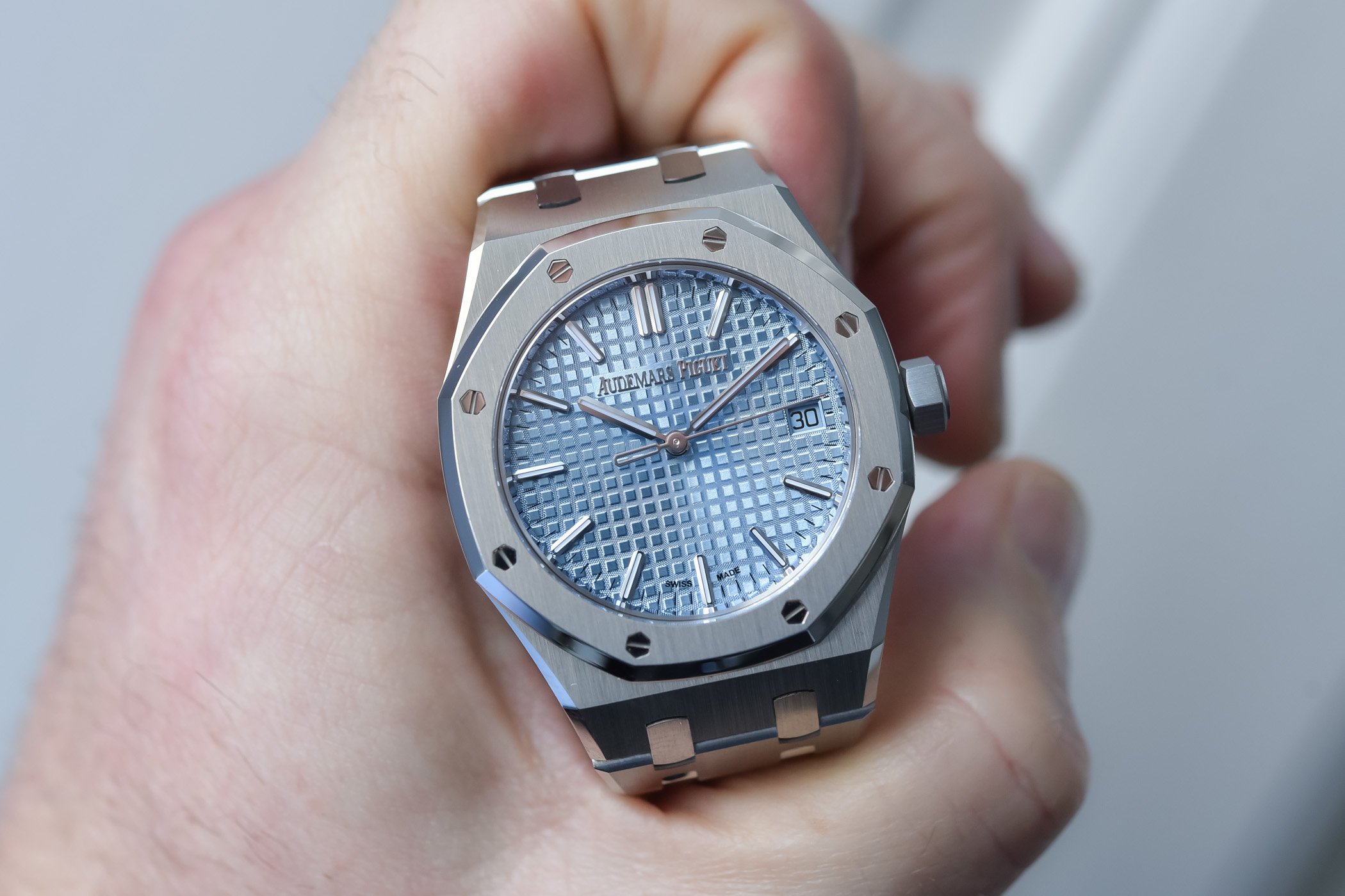
Refreshing a watch that has marked the identity of a brand for fifty years, which saved the brand from the onslaught of quartz in the 1970s and gave birth to an entirely new genre known as the luxury sports watch, is a delicate balancing act. One too many tweaks and you risk altering its gene pool; no change at all, and you perpetuate a dinosaur. As our readers know, Gerald Genta’s 1972 luxury stainless steel sports watch, christened the Royal Oak, marked a before and after in watch design, spawning one of the most competitive segments in the watch market today. Although the stars of the 50th-anniversary celebrations of the Royal Oak were the RO Jumbo Extra-Thin 16202 and the Openworked 16204, the brand announced that the range of permanent Royal Oaks would also be updated throughout 2022, which includes this RO Selfwinding 37mm with a new automatic movement. As you will discover, the facelift in no way alters the physiognomy of Genta’s dynamic design but refines its silhouette and enhances its ergonomics for a sleeker and more comfortable experience.
Although we will be looking at the two blue 37mm Selfwinding models, there are eleven 37mm references in the collection that have benefitted from the ‘new design evolution’, ranging from stainless steel, two-tone gold and steel and solid gold cases to diamond-set bezels and a host of attractive dial colours. It’s worth mentioning that the 37mm version of the Royal Oak, a versatile unisex diameter, is a relative newcomer to the collection and was introduced in 2012 for the 40th anniversary. The design evolutions concern the 34, 37, 38 and 41mm Selfwinding and Selfwinding Chronograph models.
Optical illusions
Before we look at the changes, rest assured that the defining aesthetic codes of the Royal Oak – tonneau-shaped case with octagonal bezel and integrated bracelet, eight visible hexagonal screws and Tapisserie dial – are intact.
The design evolution on the case between the new and former 37mm Selfwinding model is extremely subtle. Obviously, the diameter is identical, but incorporating the new automatic calibre 5900 has reduced the height from 9.8 to 9mm. But this is not the only factor that works in reducing the case height. If you look at the watch from the side, you will notice that the bevels (chamfers) are more pronounced on the bezel, bracelet and reverse side than in the past. It might not seem like a big deal, but the brightly polished sloping bevels attract more light and visually attenuate the height of the case. The overall effect is that the case looks even slimmer.
The ergonomic properties of the bracelet have also been enhanced, making it even more comfortable to wear. The first four links are now trapezoidal instead of parallel, and the transition from the case to the tapered bracelet is smoother and more elegant. Not only are the links are thinner and lighter than previous versions, but the bevelled edges cut into the metal and refine its profile even further. Another favourable aspect of the more pronounced polished bevels is the heightened contrast they provide with the satin-brushed hand finishings.
Bleu Nuit, Nuage 50 and Light Blue Dials
Just like the first Royal Oak of 1972 (ref. 5402), the Selfwinding 37mm features a ‘Bleu Nuit, Nuage 50’ guilloché Tapisserie dial.This iconic blue tone was Genta’s original colour choice for the watch and was produced using a galvanic bath. Today a PVD (physical vapour deposition) reproduces the signature blue colour homogeneously across the collection. The second RO we have with us today has a lovely light blue dial that works very well with the steel case.
Other nuanced changes on the dial involve the minutes track, which is now printed directly on the Grande Tapisserie surface (like the ref. 5402) and not on the flange, and the size of the white gold hour markers and Royal Oak hands that are now uniform across the Royal Oak collection. Recognising that truncated hour markers are a pet peeve for many purists, designers at AP have eliminated the truncated hour marker at 3 o’clock by the date window.
The ‘Automatic’ inscription and the AP monogram are no longer featured on the dial that now displays the same embossed signature used on Code 11.59 models. Similar to 3D printing, thin layers of 24k gold are applied to the dial using a chemical process known as galvanic growth and each letter is connected with links approximately the width of a hair and applied to the dial by hand. The removal of the inscriptions makes the dial cleaner with more breathing space to admire the Grande Tapisserie decoration with its raised waffle pattern punctuated by thousands of small diamond-shaped holes.
Calibre 5900 by Vaucher
AP has fitted the 37mm Royal Oak Selfwinding with a new engine that replaces the former calibre 3120. The calibre 5900, an automatic movement made by Vaucher, is marginally thinner than the 3120 with a height of 3.9mm compared to 4.26mm and has a higher frequency of 4Hz. Distinguished by a 22k rhodium-plated rose gold rotor with the “50 Years” logo – a detail that will only appear on models made in 2022 – the movement delivers a 60-hour power reserve and reveals refined Haute Horlogerie finishings.
Thoughts
With its unisex 37mm case size, this might well be the most versatile RO model in the collection today. The more prominent polished bevels shine even more light on Genta’s iconic octagonal architecture and visually attenuate the case thickness. Although purists might be attracted to the original ‘Bleu Nuit, Nuage 50’ dial colour, I wager that the attractive light blue dial will fly off the shelves in no time.
Availability & Price
The Audemars Piguet Royal Oak Selfwinding 37mm with a light blue dial (ref. 15550ST.OO.1356ST.04) and Bleu Nuit dial (ref. 15550ST.OO.1356ST.02) retail for EUR 23,300 (incl. tax). Both are part of the permanent collection, yet the 50-Year rotor is exclusive for the 2022 production and will be replaced by a classic rotor next year.
For more information, please visit Audemars Piguet.com.


